Info
Subfamily: Pooideae
Genus etymology: Aira in ancient Greek refered to darnel (now Lolium) or a closely related species. It is unclear why this name was applied to this genus which is quite different
Species etymology: caryophyllea = "dianthus leaved" refering to the leaves resembling Dianthus caryophyllus
Photosynthetic type: C3 (cool season)
Nativity: naturalized - accidental
First recorded in Hawaiʻi: 1916
Map
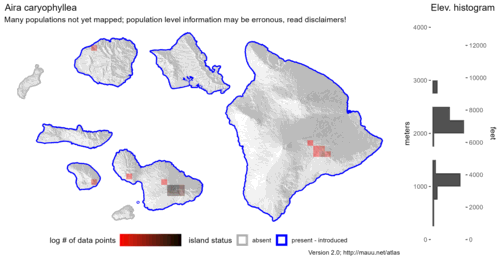

Inflorescence
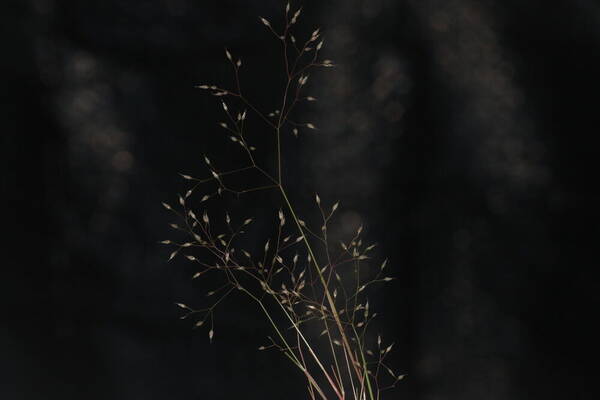
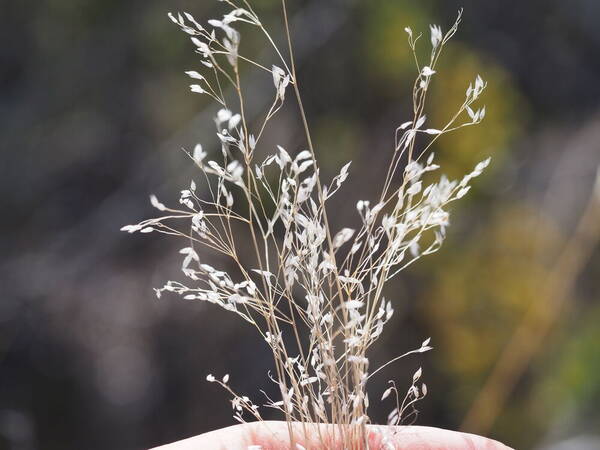
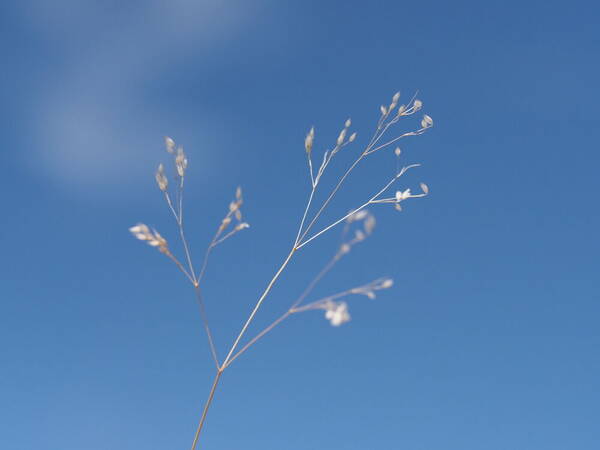
Plant
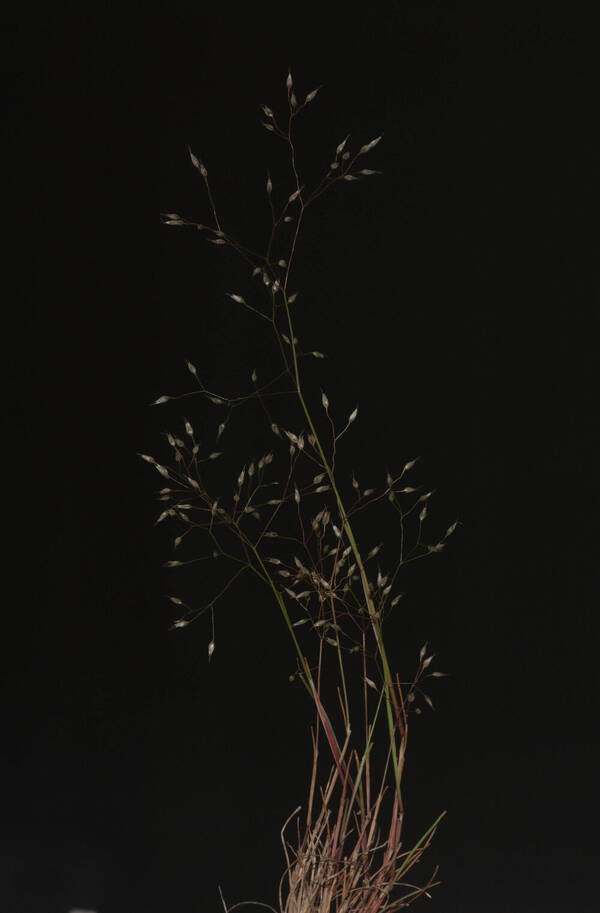
Habit
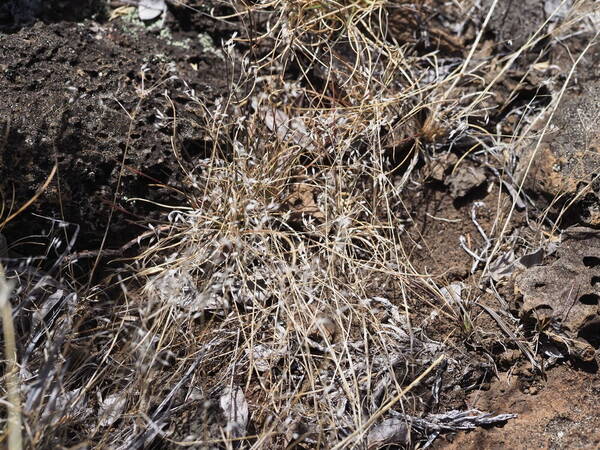
Spikelets

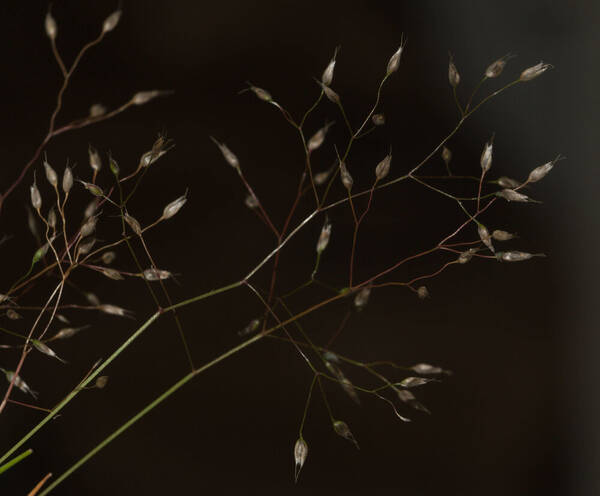
Description
Annual; culms 3–40 cm. high, loosely tufted or solitary, erect or geniculate. Leaf-blades filiform or sub setaceous, mostly 1–5 cm. long and up to 1 mm. wide; ligule up to 5 mm. long, becoming lacerate. Panicle loose, ovate to oblong, 1–12 cm. long; branches bare at the base, the spikelets in little clusters towards the tips; pedicels 3/4–3 1/2 times as long as the spikelet, pear-shaped at the tip. Glumes ovate, 2.3–3.5 mm. long (1.8–2.7 mm. in Flora area), acute (but often obtuse in Flora area); lemmas narrowly ovate, 1.2–1.7 mm. long, scaberulous above, acuminately bilobed, with a geniculate awn 2–3 mm. long arising from below the middle, or rarely the lower floret awnless; callus bearded (but usually glabrous or with sparse short hairs in Flora area).
(Description source: Clayton, W.D. 1970. Flora of Tropical East Africa. Gramineae (Part 1). Crown Agents for Oversea Governments and Administrations, London. 176 pp. )
A delicate loosely caespitose annual. Culms 5-30 cm. tall, 1-many-noded, rather slender, almost filiform, erect or ascending from a geniculate base, smooth, glabrous. Leaf-sheaths slightly longer or slightly shorter than the internodes, striate, tight at first later loose and slipping off the culm, scaberulous along the nerves. Ligule up to 4 mm. long, lanceolate-oblong or triangular-oblong, acute to sub obtuse, often lacerate. Leaf-laminae 2-7 x 0.02-0.06 cm., filiform, sub setaceous, almost always convolute, usually erect, rarely spreading, scaberulous along the nerves on both surfaces and along the margins, glabrous. Panicle 0.9-7.5 cm. long, ovate to oblong or obovate in outline, erect, somewhat contracted or open and loose; rhachis filiform, glabrous, smooth, branches paired or rarely solitary, bearing spikelets in the upper 1/2, very slender, almost capillary. Pedicels 2-10 mm. long, capillary. Spikelets 2.5-4.5 mm. long, ovate to broadly oblong in lateral view, pallid green or silvery-grey, sometimes tinged with purple, slightly glossy. Glumes 2.75-4.5 mm. long, broadly lanceolate, minutely scaberulous along the keel. Lemmas 1.75-2.5 mm. long (excluding the awn), ovate-lanceolate with the apex acute to subobtuse, dorsally asperulous towards the apex; awn 3-4 mm. long, usually brown; callus appressed-pilose. Anthers c. 0.3 mm. long. Caryopsis c. 1 mm. long.
(Description source: Launert, E. & Pope, G.V. (eds.). 1989. Flora Zambesiaca. Volume 10. Part 3. Kew, London. 152 pp )
Plants annual; tufted. Culms 4.5-55 cm, erect. Sheaths scabridulous, occasionally smooth; ligules 1.2-8 mm, abaxial surfaces scabridulous, acute to subobtuse, becoming lacerate; blades 0.3-13.5 cm long, 0.3-2.5 mm wide, antrorsely scabridulous, glabrous, apices prow-tipped. Panicles 1.2-13.5 cm long, 1.5-10 cm wide, open; primary branches to 7.3 cm, ascending to divergent, antrorsely scabridulous, occasionally smooth; pedicels 0.9-11.3 mm, apices enlarged. Spikelets 1.7-3.3(3.5) mm, silvery-green to stramineous or purplish; rachillas usually not prolonged beyond the base of the distal floret, sometimes prolonged, vestigial. Glumes subequal to equal, 1.3-3.3(3.5) mm, scabridulous on the upper 1/2; callus hairs 0.2-0.4 mm; lemmas 1.3-2.6 mm, apices bifid, sometimes only the upper lemma awned, awns 2.1-3.9 mm, straight or geniculate; paleas 0.9-1.7 mm; anthers 0.2-0.5 mm. Caryopses 0.9-1.5 mm long, 0.3-0.5 mm wide, abaxial surfaces grooved in the distal 1/2, adaxial surfaces grooved the entire length. 2n = 14.
(Description source: Barkworth, M.E., Capels, K.M. & Long, S. (eds.) 1993. Flora of North America, north of Mexico. Volume 24. Magnoliophyta: Commelinidae (in part): Poaceae, Part 1. Oxford University Press, New York. 911 pp. http://floranorthamerica.org/Aira_caryophyllea )
Annuals; culms solitary or few, some- times numerous, forming large perennial clumps resulting from reseeding, 3-40 cm tall. Sheaths glabrous, open to base; ligule membranous, triangular, 4-5 mm long, apex entire but becoming lacerate; blades filiform or subsetaceous, usually 1-5 cm long, up to 1 mm wide. Inflorescences pa- niculate, loose, ovate to oblong, 1-12 cm long, the branches bare at base; spikelets 2, ca. 3 mm long, clustered toward tips of capillary branches, pedicels 0.7-3.5 times as long as the spikelet and pear-shaped at apex; glumes pale brown, chartaceous, Ovate, 2.3-3.5 mm long, enclosing the florets, nerves + prominent, surface lustrous, glabrous except sparsely scabrous along keel, apex acute, slightly erose; lemmas dark reddish brown, narrowly ovate, 2-2.5 mm long, short-scabrous, apex acuminate, 2-lobed, apical teeth setaceous, awn 3-4 mm long, slightly geniculate, inserted below midpoint on dorsal face, rarely absent, callus minutely bearded at lateral margins of floret; palea similar in color, vestiture, and texture to lemma, 1.5- 2 mm long, apex acuminate, somewhat adnate to caryopsis. Caryopsis 1-1.5 mm long, ca. 0.5 mm in diameter, weakly adnate to lemma and palea and remaining enclosed within them. [2n = 14, 28.]
(Description source: O’Connor, P.J. 1990. Poaceae, pp. 1481–1604. In: Wagner W.L., Herbst D.R. & Sohmer S.H. (eds.)., Manual of the flowering plant of Hawaiʻi. Vol. 2. University of Hawaii Press & Bishop Museum Press, Honolulu )